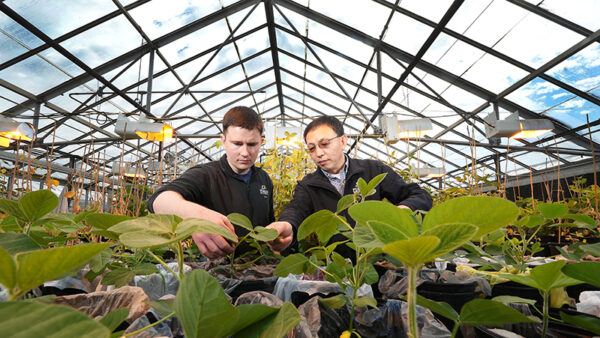University of Florida scientists have uncovered a key factor in corn’s domesticated features, a massive feat for a crop whose modern form doesn’t resemble its ancestor. The new study, published in The Plant Cell, finds that strigolactones — plant hormones — likely played a part in the remodeling of prehistoric corn into the present-day large ear.
“Teosinte, the wild ancestor of corn, is unrecognizable to us as corn today,” said Karen Koch, UF/IFAS professor in the horticultural sciences department and the study’s senior author, in a release.
Teosinte produces six to eight kernels per ear with each kernel enclosed in an acorn-like shell. The encased kernels grow along a thin stem, unlike the thick cob of modern corn. The entire ear comes in at nearly two inches long. Nearly 10,000 years ago, Native Americans located in southern Mexico started selectively breeding teosinte. The acorn-like coverings retracted over time, forming a cob. Now that the kernels were exposed, it made them easier to harvest and allowed them to be bred for elevated number and size, according to Koch.
“Those of us who study corn are always fascinated by how its ear went from this tiny, spindly thing to developing a cob with hundreds of large kernels. This transformation is what allowed corn to be one of the most productive cereal crops in the world,” Koch said.
Koch and Jiahn-Chou Guan, the study’s first author, study modern maize’s physiology, yet they never thought their research on strigolactones could help highlight its distant past, shared the release.
“It was initially a surprise to us. As part of an earlier study on strigolactones, we began working with a type of maize that didn’t make strigolactones. We noticed it had a striking combination of primitive features that resembled ancient maize, so we investigated further,” explained Koch.
Teosinte glume architecture 1, also known as Tga1, is the only gene in the corn domestication research sphere that has been identified as influential for the primitive features — yet scientists hypothesized that strigolactones also play an important role.
To test their theory, Guan bred corn plants with certain genetic mutations that enabled him to examine the impact strigolactones have on developing ears. Certain plants possessed mutations that halted the production of strigolactones or caused their cells to be unresponsive. Some of the plants also contained the Tga1 gene’s ancestral or domesticated form. It took seven years for researchers to produce plants containing the correct combination of traits, yet the investment paid off, believes Guan.
The plants bred in the study produced corn kernels enveloped by partial shells made up of the acorn-like structures found in ancient corn. The additional tissue partially protected the kernels yet constrained their growth — some were choked or killed if they reached modern day size. Guan was shocked when he first saw these features because it seemed as though the corn had reverted back to an earlier form.
“Those were ‘ah ha moments’ to me! It feels like discovering a hidden secret that no one has ever imagined before,” he said.
Despite the new revelations, researchers still have much to learn about the creation of modern corn ears in relation to strigolactones.
“The increase in kernel and ear size requires a lot of input from the source organs like leaves and roots,” added Guan. “Understanding the extent to which strigolactones coordinate the resource remobilization may answer questions about how this important physiological process was engineered during the conversion of the grassy-like teosinte to modern maize.”
Greater knowledge of strigolactones in corn could also impact the growth of the crop in Sub-Saharan Africa — a climate where parasitic witchweed makes growing corn nearly impossible, said Koch.
“Witchweed is attracted to strigolactones in roots of the maize plant. It taps into these roots and sucks away the water and resources like its vampire-witch name implies. However, if we could develop maize that doesn’t produce this hormone in its roots, that could be a breakthrough for growing maize in the region,” she concluded.













